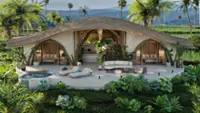When the first holidaymakers came to the Maldives in 1972, they lived in simple huts made of corals and palm fronds. — Kurumba Maldives/dpa
Palm-fringed sandy beaches, shimmering turquoise lagoons, colourful coral reefs, eternal summer – for many, the Maldives are the dream holiday destination.
Fifty years after tourists first began to arrive the island state in the Indian Ocean expects a record number of 1.6 million guests in 2022 – Maldives tourism is booming.
Already a subscriber? Log in
Save 30% OFF The Star Digital Access
Cancel anytime. Ad-free. Unlimited access with perks.





